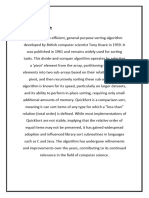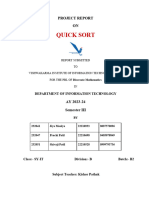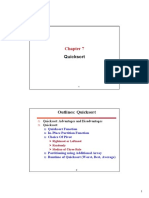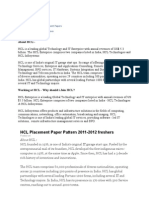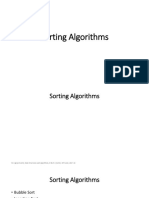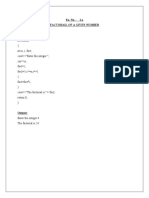0% found this document useful (0 votes)
13 views14 pagesModule 2 Part C
QuickSort is an efficient sorting algorithm that uses a divide and conquer approach, partitioning an array around a selected pivot. The algorithm can choose the pivot in various ways, including the first element, last element, random element, or median. QuickSort is favored for sorting large files due to its average case time complexity of Θ(n log n).
Uploaded by
dating.tastiness772Copyright
© © All Rights Reserved
We take content rights seriously. If you suspect this is your content, claim it here.
Available Formats
Download as PPT, PDF, TXT or read online on Scribd
0% found this document useful (0 votes)
13 views14 pagesModule 2 Part C
QuickSort is an efficient sorting algorithm that uses a divide and conquer approach, partitioning an array around a selected pivot. The algorithm can choose the pivot in various ways, including the first element, last element, random element, or median. QuickSort is favored for sorting large files due to its average case time complexity of Θ(n log n).
Uploaded by
dating.tastiness772Copyright
© © All Rights Reserved
We take content rights seriously. If you suspect this is your content, claim it here.
Available Formats
Download as PPT, PDF, TXT or read online on Scribd
/ 14



